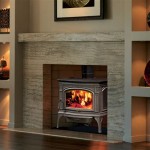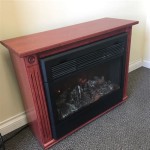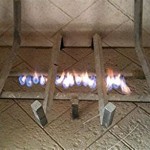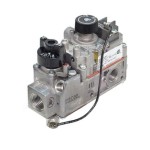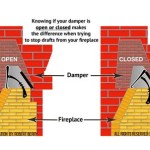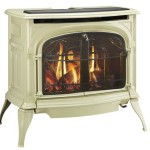Selecting the Right Wood for Your Outdoor Fireplace
An outdoor fireplace offers a focal point for gatherings, adding warmth and ambiance to any outdoor space. However, the enjoyment of an outdoor fireplace is significantly impacted by the type of wood used. Choosing the correct firewood is crucial for efficient burning, minimal smoke production, and overall safety. Understanding the different wood types and their characteristics allows users to maximize the benefits of their outdoor fireplace, creating a more pleasant and enjoyable experience.
The primary consideration when selecting wood for an outdoor fireplace is whether the wood is seasoned or unseasoned. Seasoned wood, also known as dry wood, has been allowed to dry for an extended period, typically six months to a year. This drying process reduces the moisture content of the wood, making it burn more efficiently. Unseasoned wood, or green wood, contains a high level of moisture, resulting in smoky, inefficient fires that produce less heat. Burning green wood also increases the risk of creosote buildup in the chimney, which can lead to chimney fires. Therefore, selecting seasoned wood is essential for safe and effective outdoor fireplace use.
Understanding Hardwoods vs. Softwoods
Firewood is broadly categorized into hardwoods and softwoods. These classifications refer to the density and structure of the wood, which directly affects its burning characteristics. Hardwoods generally come from deciduous trees, which lose their leaves annually, while softwoods come from coniferous trees, which typically remain evergreen. While there are exceptions, hardwoods are denser than softwoods, resulting in longer burn times and more heat output.
Hardwoods, such as oak, maple, ash, and birch, are excellent choices for outdoor fireplaces. Oak is a popular option due to its high density and long burn time. Maple provides a consistent, steady heat, while ash is known for its easy splitting and burning properties. Birch offers a pleasant aroma and good heat output, but it tends to burn more quickly than oak or maple. The density of hardwoods allows them to burn hotter and longer, providing sustained warmth and a longer-lasting fire. This translates to needing less wood to maintain the fire, making it a more economical choice in the long run.
Softwoods, such as pine, fir, and cedar, are less ideal for outdoor fireplaces. They contain higher levels of resin and burn more quickly, producing more smoke and sparks. While softwoods can be used for kindling to start a fire, they are not recommended as the primary fuel source for an outdoor fireplace. The quick-burning nature of softwoods means they need to be replenished frequently, and the excessive smoke can be bothersome. Furthermore, the higher resin content increases the risk of creosote buildup, posing a potential fire hazard.
Recognizing Seasoned Wood
Identifying seasoned wood is critical for ensuring a clean and efficient burn. Several characteristics differentiate seasoned wood from green wood. One key indicator is the weight of the wood. Seasoned wood is noticeably lighter than green wood due to the reduced moisture content. Another sign is the color of the wood. Seasoned wood typically has a grayish or weathered appearance, whereas green wood retains a fresher, more vibrant color.
Cracks and splits on the ends of the logs are also indicative of seasoned wood. As the wood dries, it shrinks, causing these cracks to form. The bark on seasoned wood may also be loose or peeling, while the bark on green wood is usually tightly attached. Finally, seasoned wood should have a hollow sound when two pieces are struck together, in contrast to the dull thud produced by green wood. These visual and auditory cues help users identify seasoned wood and avoid the problems associated with burning green wood.
Proper Storage of Firewood
Even after selecting the right type of wood, proper storage is crucial for maintaining its quality. Firewood should be stored in a dry, well-ventilated area to prevent moisture buildup and promote further seasoning. Stacking the wood off the ground, using pallets or a dedicated firewood rack, is essential to prevent it from absorbing moisture from the soil. Covering the top of the woodpile with a tarp or other waterproof material will protect it from rain and snow, while still allowing for adequate airflow.
The location of the woodpile is also important. It should be placed away from buildings and other flammable materials to minimize the risk of fire. Ideally, the woodpile should be located in an area that receives ample sunlight and is exposed to wind, which helps to dry the wood more quickly. Avoid storing firewood in enclosed spaces, such as garages or sheds, as this can trap moisture and prevent proper seasoning. Proper storage practices ensure that the firewood remains dry and ready for use in the outdoor fireplace, maximizing its burning efficiency and reducing the risk of creosote buildup.
In summary, selecting and maintaining the right wood for an outdoor fireplace contributes significantly to the overall enjoyment and safety of the experience. Choosing seasoned hardwoods over softwoods ensures a longer, hotter burn with minimal smoke. Recognizing the characteristics of seasoned wood and implementing proper storage techniques further enhances the performance of the outdoor fireplace. By considering these factors, users can create a warm, inviting, and safe outdoor gathering space.

Outdoor Fireplaces Charlotte Fireplace Design Coogans Build

Outdoor Fireplace Builder Richmond Va Dreams

42 Castlewood Outdoor Wood Burning Fireplace Fine S Gas

Outdoor Fireplace Kits Masonry Stone

Outdoor Wood Fireplaces Jetmaster
.aspx?strip=all)
5 Benefits Of Outdoor Fireplaces Regency

Gas Logs Vs Wood Burning Outdoor Fireplaces Green Okie

25 Outdoor Fireplace Ideas Fireplaces Fire Pits

Outdoor Living Range Fireplaces Coastal Design

Outdoor Fireplace Builder Richmond Va Dreams
Related Posts


